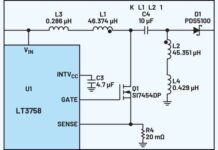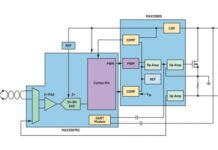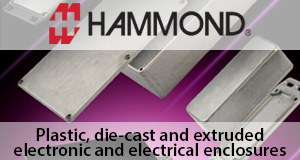Battery Chargers
The role of battery chargers has become increasingly important in our modern world, where portable and backup battery management systems are integral to our daily lives. To ensure the safety and reliability of battery management systems, robust control devices are necessary to reduce the risk of battery failures and explosions. These charger control devices also help to maintain battery temperature and extend battery life span. Analog Devices offers highly reliable and efficient integrated wired and wireless multi-chemistry charger controller solutions, which are suitable for a broad range of applications, including industrial automation, medical, logistics and retail, backup systems, instrumentation, and energy harvesting.
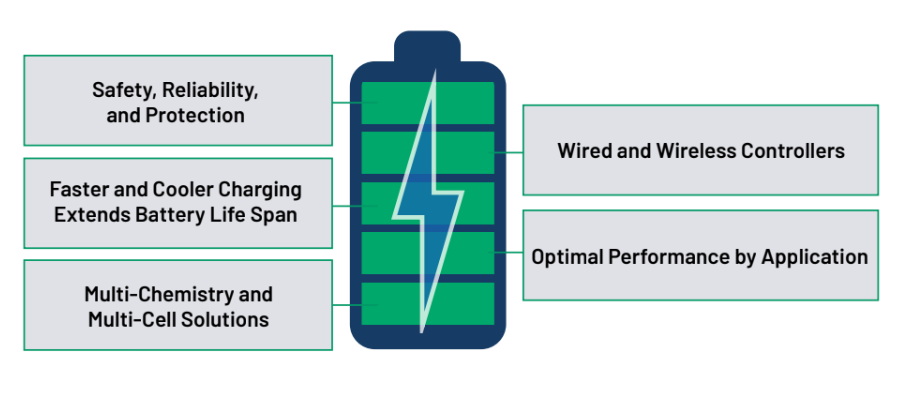
Switching Chargers
Switching chargers are a type of battery charger that uses a switching regulator to regulate the charging current and voltage. The
switching regulator adjusts the output voltage and current based on the battery’s state of charge and other factors, ensuring that the
battery is charged quickly and safely.
One of the key benefits of switching chargers is their ability to handle a wide range of input voltages, making them ideal for use with
a variety of power sources such as wall adapters, USB ports, and wireless charging pads. They also offer a high degree of flexibility
in terms of charging parameters, allowing for customized charging profiles that can extend the life of the battery and optimize
charging performance.
Compared to linear chargers, which regulate the charging current by dissipating excess energy as heat, switching chargers are
more efficient and produce less heat. This makes them ideal for use in portable devices such as medical devices, point-of-sale (POS)
devices, and industrial handhelds, which require fast and efficient charging without overheating.
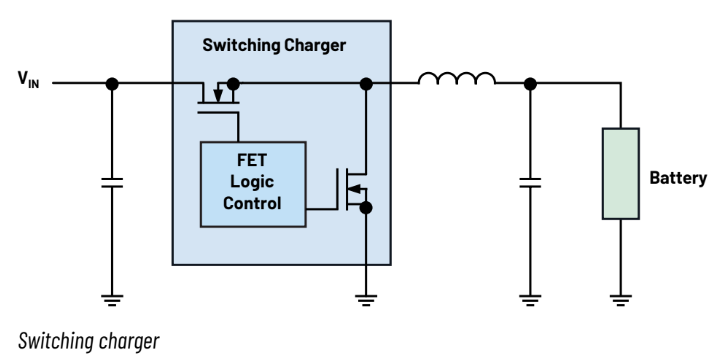
Linear Chargers
Linear chargers are a type of battery charger that uses a linear regulator to control the charging current and voltage. Unlike switching
chargers, which use a switching regulator to increase efficiency, linear chargers dissipate excess energy as heat to regulate the
charging current. This makes them less efficient than switching chargers, but also simpler and less expensive to implement.
Linear chargers work by using a voltage regulator to adjust the voltage applied to the battery, based on its state of charge and other
factors. The charging current is regulated by controlling the voltage drop across a series pass element such as a transistor or diode.
While linear chargers are less efficient than switching chargers, they offer better regulation of the charging current and voltage, which
can result in a longer battery life and better charging performance.
Linear chargers are commonly used in applications where cost and simplicity are more important than efficiency, such as low
power devices or devices with limited power sources. They are also well-suited for charging batteries with low capacities or low
charging rates, where the lower efficiency of a linear charger is not a significant drawback.
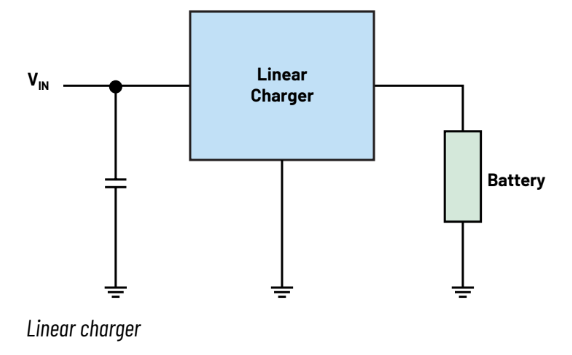
Wide Input Voltages and Multi-Chemistry
ADI industrial charger portfolio has charging controllers ranging from 4.5 V to 60 V maximum input voltage that support design
flexibility and enable minimal circuit layout changes to support alternate solutions and thus reduce overall design time.
Multi-chemistry chargers are a type of battery charger that is capable of charging different types of batteries, such as lithi-
um-ion, nickel-metal hydride, and lead-acid batteries. They offer greater versatility and convenience compared to single-chemistry chargers, which are designed to charge only one type of battery.
Multi-chemistry chargers work by using a microcontroller or digital signal processor to monitor the charging process and adjust the
charging parameters based on the battery chemistry and condition. The battery chemistry is identified by using the proprietary
charging algorithm based on voltage levels (Refer to LTC4013 for example). This allows for optimized charging performance and improved
battery life.
One of the key benefits of multi-chemistry chargers is their ability to handle a wide range of batteries and charging scenarios, making
them ideal for use in applications where multiple battery types are used or where charging needs may change over time. They also
offer advanced safety features, such as overcharge protection and temperature monitoring, to prevent damage to the battery and
ensure safe charging.
multi-Chemistry chargers are commonly used in a variety of industries and applications, such as automotive, marine, and
aerospace, where reliable and flexible charging solutions are required. They are also popular in low power electronics, such as digital
cameras and industrial and medical handheld devices, where users may have multiple devices with different battery chemistries.
Common Battery Chemistries
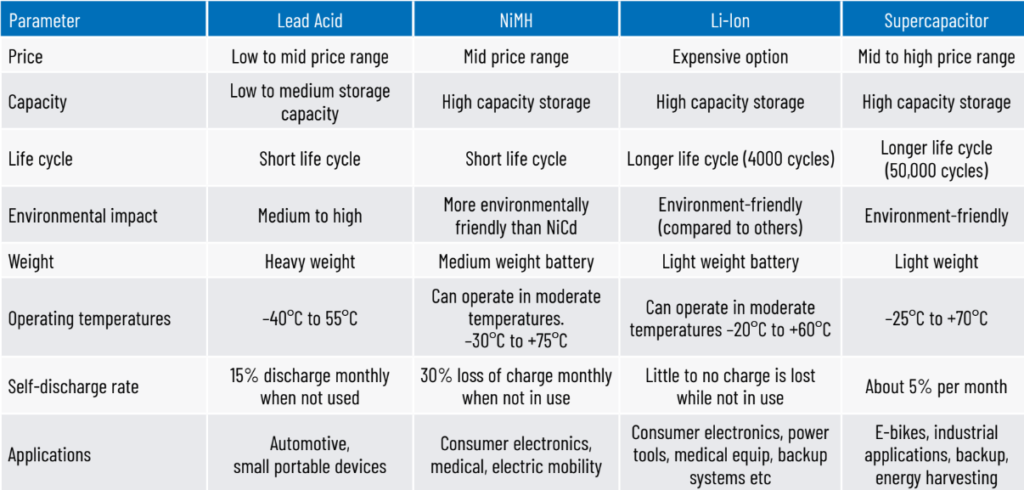
Click here to read the full article.






